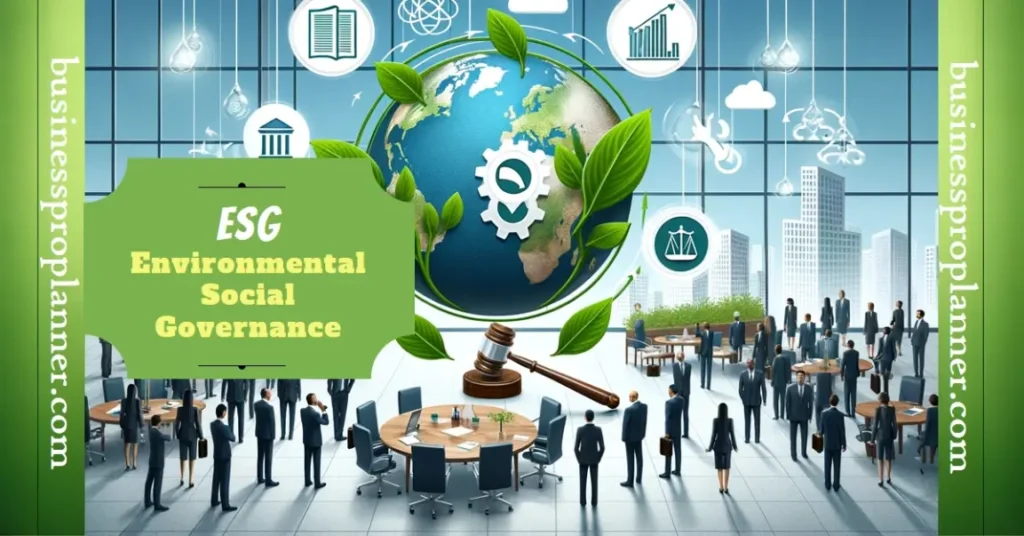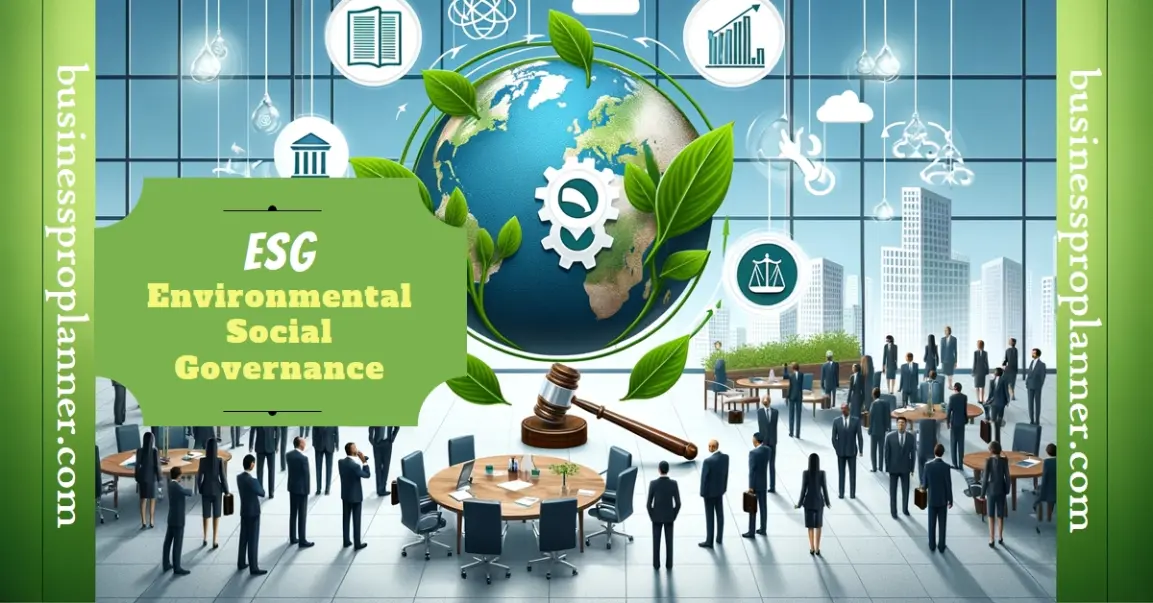The importance of environmental, social, and governance (ESG) considerations is multiplying for businesses worldwide. Stakeholder expectations around a company’s ESG performance and impacts are higher than ever. At the same time, there is strong evidence that addressing material ESG issues can help drive innovation, mitigate risks, and achieve long-term value creation. However, successfully integrating ESG into core business operations and strategy can be challenging. This guide outlines a pragmatic process any organization can follow to integrate ESG strategically into its business.
Key Takeaways:
- ESG (environmental, social, and governance) integration is vital for meeting stakeholder expectations, enhancing reputation, driving growth, and building resilience.
- Effective ESG integration requires setting goals aligned with business strategy, connecting ESG metrics to finances, stakeholder engagement, and tracking/disclosing progress.
- Leadership commitment, focusing on material ESG issues, and ongoing tracking and disclosure are critical success factors.
- A materiality assessment, goal-setting, and consulting help overcome barriers to ESG integration.
What is ESG Integration?
ESG integration means embedding relevant ESG factors across a company’s operations and overall business strategy. Rather than treating ESG as a separate initiative or add-on, ESG considerations become ingrained into core decision-making and planning. This enables businesses to create long-term value by managing ESG-related risks and pursuing ESG-driven opportunities.

Why Integrate ESG into Your Business?
There are several compelling reasons for companies to prioritize ESG integration:
Meet Rising Stakeholder Expectations
Customers, employees, communities, governments, and investors are increasingly focused on ESG issues. Failing to integrate ESG risks falling short of stakeholder expectations, while proactive integration can strengthen stakeholder relationships and social license to operate. For example, 77% of investors now evaluate non-financial ESG disclosures when making investment decisions.
Enhance Reputation and Brand Value
Companies that responsibly manage ESG issues enjoy reputational benefits with customers and talent. Consumers today favor brands with ethical and sustainable practices. A strong ESG focus also helps attract and retain top talent, as purpose and social impact become increasingly important.
Drive Innovation and Growth
An ESG lens prompts companies to pursue sustainability-driven innovation, uncover growth opportunities in green tech and products, and tap into new markets. ESG helps future-proof businesses in a world where climate change, resource scarcity, and inequality shape demand.
Build Resilience
Proactively addressing ESG risks enhances supply chain resilience, operational efficiency, risk management, and preparedness for disruptions. For example, improving energy efficiency cuts costs while reducing environmental impact.
Challenges and Opportunities of ESG Integration
While adoption is accelerating, ESG integration remains complex. It requires coordination across departments and thoughtful execution. Companies may face hurdles like unclear metrics, stretched resources, and lack of internal buy-in.
However, these challenges bring opportunities to build strategic capabilities and competitive advantage. ESG integration can uncover efficiencies, inform R&D priorities, and reveal unmet customer needs. The journey also strengthens stakeholder relations and employee loyalty.
How to Integrate ESG into Your Business
Integrating ESG successfully requires a strategic approach across these key steps:

Step 01: Conduct a Materiality Assessment
A materiality assessment identifies your company’s most significant ESG risks, opportunities, and impacts based on business priorities and stakeholder concerns. This focuses efforts on issues that matter most economically and reputationally. For example, climate change vulnerability may emerge as a key concern.
Step 02: Set ESG Goals Aligned to Business Strategy
With material issues identified, set specific ESG targets and key performance indicators tied to business objectives and timelines. Seek both qualitative goals (e.g. improve workplace diversity) and quantitative ones (e.g. reduce carbon emissions by 50% by 2030). Connect goals to financial planning and expected ROI.
Step 03: Align Core Business Strategy with ESG Priorities
Integrate the material ESG issues into your core business strategy, investment decisions, and operations. For example, if climate change is a priority, pursue mitigation across the value chain. Build ESG criteria into capital expenditure decisions.
Step 04: Engage Key Internal and External Stakeholders
Foster buy-in across the organization through training, workshops, and internal marketing of ESG efforts. Regularly engage investors, customers, and communities for input on ESG strategy. Coordinate initiatives across departments.
Step 05: Measure and Report on ESG Performance
Track progress through concrete metrics like reduced energy usage and employee volunteer hours. Rigorously gather and disclose data through reports like the Global Reporting Initiative and SASB. Communicate ESG wins internally and externally.
Step 06: Continuously Implement ESG Across Operations
Pursue initiatives across procurement, new product development, HR, facilities, and IT to embed sustainability. For example, integrate ESG factors into supplier codes of conduct, build green infrastructure, and reduce paper usage.
Step 07: Monitor, Review, and Disclose Progress
Keep leadership, stakeholders, and the board apprised of ESG program outcomes through regular reviews and disclosures. Draw on insights to expand successful initiatives and adjust strategies as needed.
ESG Integration Success Factors
Companies that excel at ESG integration exhibit these success factors:
- Leadership Commitment: ESG efforts thrive with vocal, ongoing support from senior management and the board.
- Connection to Financials: Quantifying ESG’s financial impacts, risks, and opportunities aids buy-in.
- Focus on Material Issues: Prioritizing the ESG factors most relevant to the business maximizes strategic value.
- Ongoing Tracking and Disclosure: Regular measurement, reporting, and communication drive continuous improvement.
- ESG Embedded in Culture: ESG becomes ingrained into the company’s identity, purpose, and employee engagement.
Best Practices for ESG Integration
Follow these best practices to maximize the strategic value of ESG:

- Connect ESG Metrics to Financial Planning: Integrate ESG KPIs into financial forecasting, lending decisions, and valuation models. This reveals the dependencies between sustainability and economic performance.
- Make ESG Part of Enterprise Risk Management: Analyze exposure to ESG risks alongside traditional operational and financial risks for a comprehensive view.
- Pursue ESG Insights and Consulting: Seek guidance from experts like McKinsey to overcome knowledge gaps and efficiently integrate ESG.
- Focus on the Most Material ESG Issues: Prioritizing the ESG factors with the biggest potential business impact helps optimize resource allocation.
- Regularly Engage Stakeholders: Dialogue with stakeholders helps validate existing efforts and reveals new priorities.
Overcoming Barriers to ESG Integration
Common obstacles to ESG integration include:
- Unclear Metrics and Data Gaps: Develop consistent ESG reporting standards across the company. Gradually expand data collection processes.
- Resource Constraints: Pursue quick wins first, like reducing paper usage. Multi-year roadmaps help phase larger initiatives.
- Lack of Unified Strategy: Strong leadership and cross-functional coordination foster an integrated strategic approach.
- Low Buy-In: Training, internal marketing, and tying comp to ESG goals build broad engagement.
- Perceived Trade-Off With Profits: The business case showing ESG’s financial benefits secures buy-in. Partnerships and consulting can also overcome capability gaps.

Conclusion
Integrating environmental, social, and governance factors into business strategy and operations is mission-critical in today’s landscape of rising stakeholder expectations. Companies that excel at ESG integration will gain a competitive advantage and build more resilient, future-ready organizations.
While ESG adoption has its challenges, the long-term upsides make the effort well worthwhile. Companies that proactively embed ESG across their business are poised to attract talent and investment, spur innovation, tap into new opportunities, and strengthen stakeholder relations.
By following the steps and best practices outlined, leadership teams can effectively integrate ESG into their organizations and reap the strategic benefits.


2 thoughts on “How to Integrate ESG into Your Business- From Theory to Practice!”